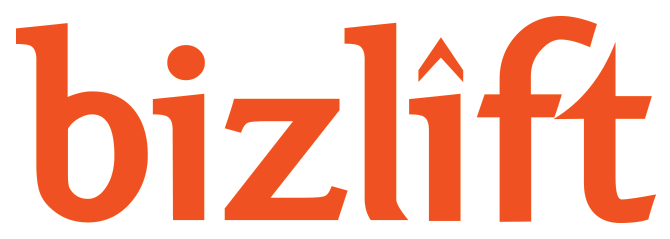
Editor note: This is a basic primer intended for readers interested in setting up a website for their business. If you already have an established online business presence, you may prefer to skip this article and read the Is Your Website A Money Making Machine? article.
Taking your business online should be a pivotal part of any business plan, and it’s easier than you might think. Here are 8 steps to get your online business up and running successfully.
1. Domain Name – This is one of the most important decisions you will make while setting up your website. The domain name serves as your address for your website and every email account. It also helps with keyword rankings on search engines. Try to register a .com domain for your business as it is the most common extension. If you use another extension like .biz, .pro or .ws, visitors will have to remember both the first part of your domain name and the extension, which increases the chance of them typing in the wrong website address. NetworkSolutions (a VeriSign company) was the leading domain registrar. Their prices start at $35 per year. There are now many other registrars that provide the same service for much lower prices.
2. Hosting – After you have registered your domain name you will either need to set up your own web server and high-speed Internet connection, or find a hosting service for your site. You should be able to find a reliable hosting solution with little or no setup fee and no long-term contract for about $20 per month. Be careful with the really cheap services that offer a monthly fee of $10 or less. While there probably are some decent ones, many bulk-hosting companies pack so many clients onto one server that they sometimes experience technical difficulties including lost email and downtime.
3. Internet Payment Gateway – Most online transactions are done by credit card. To authorize credit card payments online, you will need an Internet Payment Gateway. PayPal and Authorize.net are among the leading providers.
Standard payment gateways also require a credit card merchant account to deposit the online payments you receive. Even if you already have one for a physical retail store, you will probably need to setup a new one that works with a gateway. You can also find combined offers that include both merchant account and payment gateway through one provider.
4. eCommerce Software – Basic “no-frills” shopping cart hosting ranges from about $20 to $50 per month, while licensing for advanced solutions costs tens-of-thousands of dollars. My favorite solution is the “Open For Business” project, or “OFBiz” for short. This software had great up-sell and cross-sell features for increasing sales. It also comes with tools for multiple employees to login and handle phone, mail orders, and customer service. The most amazing thing about this software is that it’s FREE. To learn more about OFBiz, visit their website at www.ofbiz.org.
5. Secure Certificate – To protect your customer’s private information, you will need to encrypt their credit card numbers before it is sent across the Internet. A secure certificate allows your server to accept encrypted connections, also known as Secure Socket Layer or SSL connections. Your certificate also verifies your company’s identity, so customers can feel comfortable knowing who they’re sending their information to.
To view the certificate information of a secure site, click on the padlock icon, or in Internet Explorer go to the File menu, select Properties, then click on the “Certificates” button.
VeriSign is the leading issuer of secure certificates. Their standard encryption (128-bit SSL) starts at $995 per year.
Thawte is another company that issues certificates, and is actually owned by VeriSign (but shhh…they don’t mention it on their sites). While VeriSign is the premium brand, Thawte is their generic brand. A 128 bit cert from Thawte starts at only $149.
You can get certs for less (our certs are $99/year), but some businesses feel the extra $900/year is worth being able to display the VeriSign logo on their site.
It’s not enough to just put your business online, you need to successfully compete online.
6. Web Design – Your website is your online identity. Visitors will judge your company’s professionalism and competency by the appearance of your website. A site that appears to be designed by an amateur can hurt your credibility. It can sometimes be better to NOT have a site, than to have a poorly designed site. It’s not enough to just put your business online, you need to successfully compete online. Avoid the generic template sites and hire a professional designer who can build a good looking and effective website.
7. Updates – Once your site is up and running, make frequent updates. Visitors want to find current information and search engines like Google favor sites that are constantly being modified. Remember that your website is your online identity. You wouldn’t go for months without showering, shaving or changing clothes, so don’t neglect your website. Keep it fresh.
Rather than hiring a developer to make your updates, you might consider building your site using Content Management System (CMS) software. This allows you to login and use an online editor to update or add new content.
A quick and easy way to frequently add fresh content to your website is to add a blog to your site. Blogging software allows you to make updates and additions like CMS software, but is simpler and easier to use. If your contact info and products or services don’t change frequently, then you can leave the bulk of your site the same and use a blog to keep visitors updated on new happenings.
8. Market – Now that you have an online presence, it’s time to bring on the traffic. Make sure you promote your website URL everywhere. Place it on your business cards, advertisements, and email signatures.
For more info on increasing traffic and converting more sales through your website, check out our Is Your Website A Money Making Machine? article.
Obviously, there is much more to each of the 8 steps but now you have the basic idea of what it will take to do business online. Come visit again soon for more specific information in future articles.
Here’s wishing you success and good fortune as launch your online business. Please feel free to post a comment and share your experiences with any of the 8 steps, we’d love to hear how it’s going for you.


Hi Sterling,
I wasn’t sure where to leave this comment, so decided to leave it here on what I believe to be your first post.
I know you have visited my blog several times, for which I thank you. Last month I decided it was time for me to “pay it forward” by finding new bloggers, and showcasing them for a one week period on my blog, in a section (top sidebar) called “New Blog Of The Week”.
Although it appears you may know a lot more than brand new bloggers (based on your business experience), I feel you are a good “fit” for my new blog of the week, as well as to the community of readers that frequent my blog.
I am in the process of editing my post for today (2/19/08), where I will introduce you to my readers. Although my blog does not get massive traffic (yet), I do have great cyberspace friends who support and inspire me.
Come by again, and meet the community of my blogging friends.
I’ll be popping in to watch your progress and will add you to my RSS feed, as well.
Good Luck with your blog, and many thanks for sharing your knowledge with others.
Barbara
It’s the first time I comment here and I must say that you share genuine, and quality information for bloggers! Great job.
p.s. You have an awesome template for your blog. Where have you got it from?
Random question: I was told to start a blog so that my clients or potential clients could connect with me, I am a photographer. Do you find that happening with your readers?
What a facinating article. I’m looking for a marketing expert to help with a project, could you help?
Great web site, it seems you have created valuable user content,
well worth the visit. The internet needs more quality sites like this one.